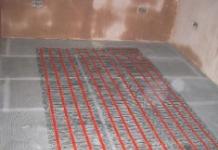The scheme of an energy-saving lamp depends on the specific type of light source. In most cases, compact fluorescent lamps (CFLs) are called energy-saving, equipped with a threaded base and characterized by a power of 7 W or more.
Their popularity compared to linear products is due to their compactness, the presence of a standard base (E27 or E14 for nightlights) and the absence of the need for a ballast (ballast). 
Types of energy saving lamps
There are several criteria by which energy-saving lamps are classified. The most common of them are the base and the glow temperature.
A plinth is an element used to fix a product in a lighting fixture and supply electricity. Its main types are threaded and pin.
Most often in the domestic sphere, threaded plinths are screwed into ordinary cartridges. They are denoted by the letter E and a numerical value indicating the diameter in millimeters. E27 is considered standard, while E14 is used in table lamps or sconces. And yet, threaded bases are more often installed in DRL and sodium lamps intended for street lighting.
The pin type is used for specific fixtures. Available with two or four pins, and the connectors themselves are marked with the letter G and a numerical value. Relevant for powerful lighting fixtures.

Depending on the glow temperature, an energy-saving lamp emits light of a certain shade (measured in Kelvins):
- Warm light (yellow) - 2700 K. The shade is similar to the glow of conventional lamps (incandescent).
- Natural white light - 4200 K. Fluorescent lamps, neutral shade.
- Cold light (white) - 6400 K. It is close to the blue spectrum, therefore it is characterized by a bluish tint. It is usually used in industrial facilities in lamps from 65 W and above.

Also, energy-saving lamps are produced in different shapes - they are tubular, spiral, arcuate. In the first case, there are no protective elements.
The principle of operation and the device of an energy-saving lamp
The CFL consists of a hollow-type glass bulb, the inside of which is filled with mercury vapor. When an electric current is applied between the electrodes, an arc discharge is formed, associated with a starting capacitor. Due to this, ultraviolet radiation is formed, the spectrum of which is invisible to the human eye. In order to convert the glow into visible light, the inner walls are coated with a phosphor, which guarantees a bright glow. If compared with an incandescent lamp of the same power consumption, then the light output will be significantly higher. The cost of the device depends on what the phosphor consists of.
The disadvantage of energy-saving lamps is the fact that they cannot be directly connected to a 220 V power supply. The mercury vapor in them in the off state has a high resistance, so a high voltage pulse is needed to form a discharge. After the formation of the discharge, the resistance becomes negative. If there are no protective elements in the circuit, this will lead to a short circuit. In tubular devices, an electromagnetic ballast is used, which is installed directly in the lamp. 
Components of the scheme
In addition to standard structural elements, such as a flask and a base, an electronic circuit is hidden under the body (electronic ballast - ballast). It is far from being in every “housekeeper” (for example, it is absent in CFL). Today, ballast remains the most reliable product for the operation of fluorescent lamps, the quality of which determines the service life.
The electronic circuit consists of the following components:
- starting capacitor - generates a powerful impulse necessary to start the lamp;
- filters - needed to eliminate radio frequency interference and electromagnetic radiation that enter the circuit along with the current (reduce flicker);
- capacitive filter - an additional element that smoothes the remaining ripples;
- current limiting choke - to protect the circuit from high current (maintains the current strength at a given level);
- bipolar transistors;
- driver - to limit the current;
- fuse - prevents the failure of the lamp, eliminates the ignition of the circuit during power surges.

How is ignition
The voltage falling on the dinistor leads to the formation of a pulse that enters the transistor and leads to the opening of the element. As soon as the start is completed, the circuit is blocked by a diode bridge. At the moment the transistor opens, the capacitor is charged, which prevents the dinistor from reopening.
The transistor acts on a ferrite ring transformer with three windings in several rows. A voltage is applied to the filaments through the resonant circuit and the capacitor.
As soon as a glow appears in the tube, it is characterized by a resonant frequency determined by a capacitive capacitor. During ignition, the voltage reaches 600 V (at the time of startup, the value is 4–5 times higher than the average), so it is necessary to monitor the integrity and tightness of the flask. If this is ignored, then the transistors will be damaged.
When the gas in the flask is completely ionized, the capacitor with the largest capacity is shunted. The frequency decreases, control passes to the second capacitor. The voltage is reduced to a value sufficient to keep the lamp lit. The cathode and anode are interchangeable, which guarantees the smooth functioning of the electronic circuit and, if necessary, simplifies repairs.
How is the repair done
To find the cause of the malfunction, you should disassemble the lamp into its component parts. Detach the top and bottom parts and unplug the flask. Using an ohmmeter, check the filaments on the bulb itself. If one of them burns out, repair the bulb. Use a high power 10 ohm resistor to complete the coil. In addition, remove the diode shunting this helix (if there is one in the circuit).

In the event of a resistor burnout in lamps with a power of more than 30 W (inclusive), there is a high probability of failure of the transistors, which is associated with a breakdown of the capacitor. To correct the situation, a new resistor is mounted that acts as a fuse, and the transistors are also replaced.
It is also possible to upgrade. Drill holes in the plinth for ventilation. Some models of energy-saving lamps are already produced with them, but there are unscrupulous manufacturers who do not think about cooling.
Important! Never use drilled base lamps in rooms with a high level of humidity. This can lead to failure of the capacitor or the entire device.
Conclusion
Before performing repair work, think carefully: disassembling a fluorescent lamp is possible only if you have the necessary knowledge and experience.
It is strictly forbidden to repair energy-saving lamps with damaged bulbs, because the tube contains mercury or other dangerous elements, and when depressurized, the product becomes extremely unsafe for human health.
The schemes are almost the same, regardless of the manufacturer. Differences may relate to diodes, shunt coils, but if you know the design principles of one product, then you can easily deal with the rest.
The success of energy-saving lamps in the market is due to their unique structure, due to which they significantly outperform their predecessors in terms of efficiency. Some elements and electronic components differ depending on the manufacturer, power and purpose, however, in general, they all have a similar circuit design.
Types of energy saving lamps
Types of lampsEnergy-saving devices are distinguished by two main features - base and glow temperature.
Base - an element that is necessary to fix the lamp in the lamp. With this connection, the electrically conductive contacts of the ESL itself and the lamp are connected. Depending on the purpose, the socles are divided into two main types, threaded and pin.
- Threaded are most often used in everyday life, they are designed for conventional cartridges. Such plinths are marked with numbers and letters: E14, E27 and E40, where the numbers indicate the diameter of the thread. They are equipped with DRL or sodium models for street lighting. Household lamps of the brands Camelion, Delux, Feron, Luxel, Maxus, Osram, Cosmos, Navigator, Uniel, etc. have such a base.
- Pin bases are used in specific luminaires. They are divided into two-pin and four-pin. Connectors are marked as 2D, G13, G23, G24, G27, G53. They are used to connect lamps in specialized and high-power lamps.
 plinth types
plinth types The warmth of the glow determines the color that the ESL will shine with. Manufacturers produce three main types, which are indicated in degrees Kelvin:
- Warm white light (2700 K) is a yellow color that is very similar to the glow of a tungsten filament.
- Natural white light (4200 K) is the color of the environment in sunlight, the most neutral and favorable for the human eye.
- Cold white light (6400 K) - the color has a bias towards the blue spectrum, which is why the glow takes on a bluish tint. Typically used in factories, installed in light bulbs of 65 watts or more.
 Glow scale
Glow scale Some manufacturers divide colors into seven categories, where the marking is done in Cyrillic letters, where L is a fluorescent lamp (to distinguish it from C - LED):
- LB - regular white;
- LTB - white warm color;
- LKB - natural white color;
- LEC - natural light, improved color reproduction;
- LD - daylight;
- LDC - daylight, improved color rendering;
- LHB - cold white light.

Expert opinion
Alexey Bartosh
Ask an expertSuch a detailed division is necessary to select the most comfortable lighting, as well as for specific purposes - working with small objects, growing animals and plants, etc. Thanks to such a wide variety, it is possible to arrange comfortable conditions in any room.
Additionally, there is a division according to the form of release of the lamps themselves: tubular (T 4, T5, T8, T10 and T12, where the numbers mean diameter 1.27, 1.59, 2.54, 3.17 and 3.80 cm, respectively), spiral, straight (pl-u11w). Tubular options are designed for installation in special fixtures, because they do not have some protective elements in the circuit.
Principles of operation and devices
 ESL device
ESL device Fluorescent lamps are hollow glass bulbs filled with mercury vapours. At the moment of switching on, an electric arc discharge is created in them between two electrodes, arranged by a starting capacitor. It produces ultraviolet radiation invisible to the human eye. To convert it into visible light, a phosphor is applied to the walls of the flask (most often, calcium halophosphate or calcium-zinc orthophosphate compounds are used). When ultraviolet light passes through the phosphor, a bright light is produced. Its light output significantly exceeds the glow of tungsten in incandescent lamps with a similar power consumption. The color depends on the composition of the phosphor.
Unlike a conventional lamp, energy-saving fluorescent models cannot be connected directly to a 220 V current source. When off, the mercury vapor inside the bulb has a very high resistance, so a high voltage pulse must be applied to generate a discharge. In addition, at the time of startup, immediately after the discharge occurs, the lamp has a large negative resistance, which, without protective elements in the circuit, can lead to a short circuit. For tubular options, an electromagnetic ballast is used, which is installed in the luminaire itself.
Components of the scheme
Energy-saving lamps that create an indoor daylight atmosphere work thanks to the following structure. In addition to the base and the flask, there is a case under which the electronic circuit of the energy-saving lamp is hidden, it is called an electronic ballast - an electronic ballast. To date, it is the most reliable element for fluorescent lamps; its durability directly depends on its quality. A detailed anatomy describing the functions of each element is as follows:
- starting capacitor - provides a direct start of the lamp;
- filters - absorb radio and other interference that enters the circuit along with electric current (designed to reduce flicker and other failures in continuous operation);
- capacitive filter - a separate filter that neutralizes and smoothes residual ripples from AC rectification (designed to eliminate flicker and provide a more stable current to the circuit, which significantly extends the life of the lamp);
- current-limiting choke - protects the electronic circuit from excessive current, maintaining its strength at a constant level;
- bipolar transistors;
- fuse - prevents failure and ignition of the electronic circuit in case of a sharp increase in voltage in the 220 V network.
 What is ESL made of?
What is ESL made of? Note! The device of energy-saving lamps is similar, which is 15 W, which is 100 - 105 W or more. An industrial 150-watt luminaire has elements that are resistant to voltage drops, there may be a more energy-efficient trigger mechanism that compensates for the higher power of the ESL.
Differences between fluorescent ESL and incandescent lamps
- In luminescent ones, the glow of the phosphor significantly exceeds the incandescence of the tungsten spiral, therefore, with a similar power, the housekeepers will shine much brighter.
- Why do incandescent bulbs get so hot? Their efficiency is very low, more than 90% of the electricity is spent on heating and maintaining the glow of the tungsten filament.
- Due to the possibility of adjusting the composition of the phosphor, the color of the glow is most comfortable for the human eye.
- Due to the substances used, fluorescent models outlast incandescent lamps by almost 20 times.
- The minimum heat dissipation in housekeepers allows them to be installed in compact table lamps, decorative lighting and floor lamps, 11 W bulbs, as well as powerful 20, 24 and 25 W bulbs are suitable for such purposes. They are connected even from a charger or battery.
- Maximum brightness in incandescent and LED versions is achieved immediately, and in housekeepers, heating mercury vapor can take from 1 to 3 minutes.
- In frost, the intensity of the glow of the phosphor is reduced by almost 2 times.
- Fluorescent lamps are not adapted to work in rooms where the switch is often used, this threatens to fail the starting capacitor, and the lamp may burn out.
- ESLs do not work in a circuit with dimmers; when the voltage drops, they turn off.
 ESL and incandescent lamps
ESL and incandescent lamps Do-it-yourself energy-saving lamp repair
If the ESL has stopped turning on, it makes sense to try to restore its performance on your own. To do this, you need to parse, carefully removing the base and pulling the electronic circuit out of the case, then you need to inspect it for serviceability. Dismantling and repair is carried out by replacing failed parts.
- Fuse. It is the most common cause of lamp failure. Its burnout is usually determined visually. The problem is solved by soldering the old one and installing a new one of the same capacity.
- Bulb filaments. To test them, you need to unsolder one pin from each end. The resistance of each thread should be the same. When a burnt thread is detected, a resistor with the same resistance as that of the damaged area is soldered to the parallel spiral.
- Using a multimeter or other device, it is necessary to check transistors, capacitors, diodes, triacs and zener diodes. They are damaged during severe overload or short circuit. If such an element is found, disassemble and solder it to a similar one, before that check the part to be replaced.
- If the flask itself is damaged, it is necessary to properly dispose of it - under normal conditions it cannot be restored.

Expert opinion
Alexey Bartosh
Specialist in the repair, maintenance of electrical equipment and industrial electronics.
Ask an expertHello! Now in everyday life, energy-saving lamps have become increasingly popular among simple incandescent lamps. All this, of course, is primarily due to economic reasons.
Nobody wants to pay extra money for electricity. And an energy-saving lamp allows you to get a much greater luminous flux for the same unit of consumed electrical energy as an incandescent lamp, but at a lower power consumption.
An energy-saving lamp consists of two main parts: a gas discharge bulb and a ballast.
The gas-discharge flask is made in various shapes (U-shaped, spiral). From the inside, the flask is covered with a phosphor, two spirals are soldered into the ends of the flask.
The ballast is made on semiconductor elements and is a pulsed voltage converter of 220 volt alternating voltage into an alternating voltage of about 400 volts. 
The diagram of an energy-saving lamp is shown in the figure below.

The principle of operation of an energy-saving lamp
As mentioned above, an energy-saving economy lamp has a bulb with spirals soldered at both ends. They are covered with a special oxide layer. This layer is needed to create thermoelectrode emission. 
When a supply voltage is applied to the spirals, they begin to heat up due to the current flowing through them. When the coils are heated to a certain temperature, they begin to emit electrons. This process is called thermoelectrode emission. The flask of the economy lamp is filled with mercury vapor. Electrons colliding with mercury atoms lead to the formation of invisible ultraviolet radiation. I act on the phosphor with ultraviolet radiation, which causes its bright glow of the already visible spectrum for the human eye and we see the bright glow of the bulb of an energy-saving lamp.
As mentioned above, an alternating voltage is used to power the lamp. Why not permanent? This is done in order to increase the life of the lamp. When the lamp is supplied with constant voltage, the following occurs. In the flask, electrons will move from one helix to another, since one electrode will be the cathode and the other the anode. The anode will be constantly bombarded by a stream of electrons and will get very hot. In this case, the oxide layer deposited on the spiral will inevitably be destroyed.
The oxide layer on the spiral significantly reduces the resistance of the electrode, and when it is destroyed, its resistance will be several times greater. This in turn will lead to a decrease in the number of emitted electrons and a decrease in the luminous flux of the lamp. it will also lead to failure of the electronic ballast.
Therefore, the use of alternating voltage significantly increases the life of the lamp electrodes.
When the electrodes are destroyed, the energy-saving lamp starts to start with the flickering of the electrodes, the luminous flux increases and after a while it burns out. This is the finale of any energy-saving lamp.
Energy saving lamp repair
Repair of an energy-saving lamp is carried out in the presence of spare parts or burnt donors, from which we can extract serviceable elements.
You only need to carefully read this material and apply the information received in practice. You can also use the insides of an energy-saving lamp in some more DIY projects.
Energy-saving lamp failures fall into two categories:
1. Electronic ballast burns out
2. The filaments burn out (most often one)
Before starting repairs, you need to find out the cause of the lamp malfunction. To do this, we need to disassemble the housing of the economy light bulb. The photo below shows the places where you need to pick a screwdriver.

The lamp will then look like this.

Disconnect the four wires on the board coming from the bulb, as shown in the photo.


Cut off the two power wires that go to the lamp base.

With the help of digital pliers, we will ring the spirals of the bulb of an energy-saving lamp. 

If at least one filament is burned out, then the flask can be thrown away. Nothing can be done about her. The lamp start circuit must be in good order.
If the spirals on the flask are intact, then we put the flask aside in anticipation of a donor lamp with a faulty bulb.
Carefully inspect the electrical circuit, pay attention to the condition of the elements. Are there burnt or burnt parts anywhere? Often the output transistor of the converter, the diode bridge, and the electrolytic capacitor fail. Buy new parts in the radio parts store to replace the burnt ones. If the markings are not visible, disassemble the work lamp if available and record their markings.
The main reasons for the rapid failure of energy-saving lamps
First of all, this is primarily a poor-quality assembly of the lamp, the use of low-quality radio components by the lamp manufacturer, as well as the absence of some parts on the printed circuit board.
The second factor is the systematic overheating of the lamp components as a result of poor cooling.
Energy-saving lamp life
The service life depends on the quality of the lamp, on the frequency of switching on and off. Some manufacturers claim a lifespan of up to 7000 hours. In practice, this time is much lower. Basically, within six months, medium-quality lamps burn out.
How to extend the life of an energy-saving lamp
To increase the life of the energy-saving lamp, it is proposed to make some modifications to the lamp. It consists in installing an NTC thermistor bulb in series with the filament and making ventilation holes in the plastic housing of the lamp base.
The thermistor provides a limitation of the inrush current of the lamp and helps to avoid burnout of the filament.
Holes in the base improve the temperature regime of the electronic circuit due to the incoming air.
Modernization of an energy-saving lamp
To open the lamp, unsolder the wire on the base, as shown in the photo below. 
Bend the edge of the base at the point where the wire is pressed

Divide the lamp body into two parts. Inside there will be an electronic ballast board.

We will need an NTC thermistor with a resistance of 20 to 40 ohms.

This is the resistance of the cold thermistor. When heated, its resistance decreases greatly and it does not affect the operation of the lamp.
The thermistor is included in the break of the filaments.

During operation, it heats up, so do not install it near the ballast.
Before assembling the case, make a circle of ventilation holes in it.

They will improve the temperature regime of the ballast elements and the lamp bulb. But you should not operate this lamp in places of high humidity. That's all for me. Good luck with your repair!
According to the principle of operation, an energy-saving lamp (ESL) is similar to a luminaire with a conventional fluorescent lamp. Like a lamp, a saving lamp consists of a ballast and a fluorescent lamp (bulb). The main difference between an ESL and a conventional fluorescent lamp is that the ESL has a built-in electronic ballast.
The shape of the flask can be of various shapes (U-shaped, spiral, etc.). The walls of the flask are coated from the inside with a phosphor, and two spirals are sealed at the ends of the tube. When heated, the spirals provide the emission of electrons on their surface. Under the action of a high voltage applied between the spirals, a glow discharge occurs in the flask in mercury vapor. At the same time, mercury atoms emit ultraviolet radiation. Under the influence of UV, the phosphor on the walls of the flask emits visible light (luminescence). The color of the glow of the lamp depends on the chemical composition of the phosphor.
Figure 1 - Energy-saving lamp Uniel (32 W).
In most cases, to open the case, it is necessary to carefully tuck with a screwdriver or a knife the place where the two parts of the case join, while trying not to damage the board and the flask. After opening, unwind the bare copper wires of the bulb from the pins on the board. After that, you can measure the resistance of the spirals, which should be about 8-10 ohms in a cold state. If one of the spirals is broken, the flask should be replaced. If there is no other bulb, then you can short-circuit the pins on the board to which this spiral was connected. If the tightness of the flask is broken, then it cannot be repaired. If the spirals are intact, then the cause of the malfunction is most likely in the ballast board. The board can be taken from another lamp, or you can try to repair it.
The circuit of the Uniel ESL-S12-32 32-watt lamp is copied from the board and is shown in Figure 2.

Figure 2 - Scheme of a Uniel energy-saving lamp
The circuit works on the principle of an autogenerator. Positive feedback is organized by a transformer (it is not marked on the board) on a ferrite ring with three "colored" windings. The generator operates at the resonant frequency of the circuit formed by the capacitors C4, C5, and the inductances of the resonant choke and feedback transformer. The current in this circuit maintains the glow of the spirals, and the voltage removed from the capacitor C5 maintains the glow discharge in the lamp.
Most ESLs work on this principle and the circuits of their boards are similar to each other. Depending on the power of the lamp, the ratings of the elements and the sizes of the boards vary. In lamps of lower power, some protection chains may be missing. Figure 3 shows the board of the ESL electronic ballast.

Figure 3 - Uniel Energy Saving Lamp Board
In practice, the most common malfunctions are breakdowns of transistors K1 / K2. In this case, the fuse blows, the resistors R5 / R6 break, and sometimes the resistors in the base circuits R3 / R4 break. Swollen C2 electrolytes are common, and the lamp may work, but flicker and glow a little dimmer. If a squeak or ringing is heard at startup and the lamp does not light, it may be a break in one of the control windings of the OS transformer, or one of the resistors in the bases. When the keys are broken, it is possible that the DB3 dinistor will be broken, and there will be no generation.
Board repair usually consists of the following:
- in the event of a breakdown of one or two transistors, replace both with similar ones;
- in case of breaks of resistors R5 / R6, replace with similar ones, or replace with jumpers;
- in case of breaks of resistors R3 / R4 in the bases, replace them with resistors of the same rating;
- replace the fuse with a similar one;
- if the electrolyte C2 is swollen, replace it with a similar one, designed for a voltage of 400V;
- if the DB3 dinistor is broken, replace it with the appropriate one.
At the time of this writing, all the lamps (about 8 pcs.) of the considered type after repair have been working for more than a year without comment.
In this article: the history of the compact fluorescent lamp; its structure and principle of operation; the spectrum of an energy-saving lamp depends on the composition of the phosphor; pros and cons of energy-saving fluorescent lamps; how to choose an energy-saving lamp.
The ban on the sale and production in Russia of incandescent lamps familiar to us has given rise to a number of persistent rumors around energy-saving lamps. For an ordinary consumer, which we are, the main task of lighting fixtures has been and remains the very quality of lighting. And, of course, I don’t want to incur extra expenses for the purchase of these “new-fangled” lamps, because they cost much more than “Ilyich's lamps”. Consider the characteristics of energy-saving lamps in this article.
History of creation
Officially, the first fluorescent or, as it is also called, fluorescent lamp was created at the beginning of the last century by an engineer-inventor from the USA, Peter Cooper Hewitt, who received a patent for it on September 17, 1901. Although some researchers dispute his primacy in the invention, calling the "father" of the fluorescent lamp the little-known German physicist Martin Arons, who experimented with mercury lamps at the end of the 19th century.
The fluorescent lamp invented and patented by Hewitt contained mercury, the vapors of which were heated by an electric current passed through it. The Hewitt lamp was spherical and slightly curved, it gave more light than the Lodygin-Edison lamps, but this light was bluish-green, unpleasant for the eye. For this reason, the first mercury lamps were used only by photographers and they were not widely used.

Peter Cooper Hewitt. 1861-1921
The fluorescent lamp in its almost modern form was created by a group of German inventors led by Edmund Germer, who patented their invention on December 10, 1926. It was Germer who came up with the idea to apply a fluorescent coating on the glass surface of the lamp from the inside, which converted the ultraviolet glow of a mercury lamp into a white light that did not hurt the eyes. Albert Hull, an engineer at General Electric, developed a fluorescent lamp with a similar coating by early 1927, but the company was forced to purchase a patent from Edmund Germer, who had issued it earlier.
Since the acquisition of the Germer patent, General Electric engineers have been actively engaged in improving fluorescent lamps, trying to bring them to mass production. To reduce the size of the bulb, round and U-shaped lamps were created, demonstrated at the GE booth at the New York World's Fair in 1939, lamps with a compact spiral bulb were developed by General Electric engineer Edward Hammer in 1976. However, helical fluorescent lamps were never put into production in the 1980s, as company executives considered the costs of building new factories excessive. In 1995, Chinese manufacturers took advantage of the slowness of General Electric by launching the production of energy-saving lamps with spiral bulbs.

Edward Hammer with his invention - a lamp with a compact spiral bulb
The magnetically ballasted (SL) screw-in lamp was introduced by Philips in 1980 and was the first fluorescent lamp of its kind to compete with incandescent lamps. An energy-saving lamp with an electronic ballast (CFL) in 1985 was first demonstrated by the German concern Osram.
The main structural elements of a fluorescent lamp are a bulb, an electronic ballast and a base. A base with a thread for screwing into the lamp socket and with contacts for powering it practically does not differ from the base of a conventional incandescent lamp.

The curved bulb of a fluorescent lamp is covered with layers of phosphor, filled with an inert gas and, in a small amount, mercury vapor - their ionization causes the lamp to glow when the power is connected. The content of mercury in fluorescent lamps ranges from 1 to 70 mg. Inside the flask are tungsten electrodes coated with a mixture of oxides of barium, calcium, zinc and strontium. The phosphor applied to the inner surface of the glass bulb in compact fluorescent lamps contains alkaline earth metals and is therefore 40% more expensive than phosphors used in oblong fluorescent lamps for ceiling fixtures. Alkaline earth metals in the composition of the phosphor of compact lamps provide operation at high radiation intensity, thanks to them it became possible to reduce the diameter of the lamp bulb. The bizarrely curved shape of the flask in fluorescent lamps makes it possible to reduce its length by dividing it into several short sections that communicate with each other.
The lamps themselves, coated with a phosphor and containing mercury vapor, will not work when the power is connected - a ballast starter is required, built into the lamp between the base and the bulb. Consuming high frequency current in the order of 50 kHz, the electronic ballast (CFL) eliminates the flickering effect of energy-saving lamps while increasing light output. The electronic ballast increases the high-frequency current for itself - it contains an inverter in its circuit. The tasks of the ballast also include heating the electrodes and maintaining the power of the fluorescent lamp at a nominal level, regardless of voltage drops in the network. The service life of an energy-saving lamp depends on how well the electronic ballast is made.

How does a fluorescent lamp work? Applying power causes a discharge between the electrodes, the current passes through a mixture of inert gas and mercury vapor, fast electrons collide with slow mercury atoms - the lamp lights up. However, 98% of the light emitted by an energy-saving lamp is ultraviolet, invisible to human vision. And the visible light coming from it is provided by phosphor layers that glow under the influence of ultraviolet radiation. The color of the illumination produced by fluorescent lamps depends on the chemical composition of the phosphor applied to the glass bulb from the inside.
Dependence of the visible spectrum of a fluorescent lamp on the phosphor
The light generated by cheap energy-saving lamps is most often unpleasant for the eyes - blue and yellow colors predominate in its spectrum, as a result, the color of objects in the illuminated room is unnatural. The reasons lie in the type of phosphor containing inexpensive calcium halophosphate. Such lamps, having a high light output, are designed to illuminate non-residential premises (warehouses, etc.) - they externally produce white light, but its reflection from objects reveals an incomplete spectrum (lack of red and green colors).

Energy-saving lamps for home lighting have a higher price. the phosphor in them creates 3-5 colored bands (for example, red, green and blue) from the spectrum visible to the human eye and imitates the effect of natural light, but at the same time reduces light output.
It is worth mentioning right away that the positive characteristics given below depend on the manufacturer of this lamp - his desire to save on raw materials and components seriously reduces the quality and life of fluorescent lamps.
pros energy saving lamps:
- significantly lower, compared to incandescent lamps, energy consumption with higher light output. If a 100 W incandescent lamp has a light output of 100-150 lumens, then the light output of a 20 W fluorescent lamp will be 1,100-2,000 lumens - the difference is obvious. The low power consumption of energy-saving lamps, among other things, significantly reduces the load on the wiring;
- significant service life, 8-10 times longer than the service life of incandescent lamps. When working an average of 2.5-3 hours a day, a fluorescent lamp will illuminate the room for 8,000-11,000 hours and will last for several years (depending on the model and manufacturer), about 6-8 times longer than the usual "Ilyich lamp";
- during the entire period of operation, the intensity of illumination by compact fluorescent lamps does not change;
- the highest temperature of an operating energy-saving lamp will not exceed 60 °C. 95% of the energy in incandescent lamps goes to heat, i.e. at a power of 100 W, an incandescent lamp will heat up to 95 ° C;
- lamps of several light shades of illumination are produced, the main ones are warm daylight (similar to the color of lighting from incandescent lamps), daylight and cold daylight;
- in the produced luminous flux, flicker is completely absent (stroboscopic effect), lighting stability is ensured by the electronic ballast of the lamp;
- factory warranty from the manufacturer for each energy-saving lamp. There were never any guarantees for "Ilyich's lamps".
Minuses energy saving lamps:
- high price. If incandescent lamps cost 10-25 rubles, then fluorescent lamps will cost 80-400 rubles. Chinese and domestic energy-saving lamps are cheaper, European ones are more expensive;
- the protrusion on the base, where the ballast of the lamp is located, sometimes prevents it from being installed. The lamp with electronic ballast does not look even when it is installed in a chandelier, because the plinth is too noticeable;
- to warm up to full brightness of light emission, these lamps require from 30 seconds to two minutes;
- The lifetime of compact fluorescent lamps depends on how often the power is turned on and off - the more often this happens, the faster the lamp will fail. Between switching off and on again, it is necessary to pause for at least 5 minutes;
- such lamps cannot be used by people with skin diseases and epilepsy, because. the intensity of illumination of energy-saving lamps is higher than conventional ones and can lead to negative consequences;
- do not break the glass bulb of the lamp, because mercury vapor will enter the premises and they will have to be ventilated for several hours at any time of the year, and residents will need to leave the premises of the house (apartment) for the entire period of ventilation - this is important. If several lamps are broken at once, you will need to call the specialists of the Ministry of Emergency Situations for demercurization. Do not break fluorescent lamps;
- it is not at all clear how to dispose of failed fluorescent lamps - it is forbidden to throw them away, and there are no specialized collection points in most settlements.
How to choose an energy saving lamp
First of all, make sure the integrity of the lamp offered by the seller, the reliable connection of the bulb with the base - lamps of small Chinese manufacturers, assembled by hand, usually sin with a loose connection.
The power of a new lamp is determined by the power of incandescent lamps previously used in a given room with a decrease of 4-5 times. Those. if “Ilyich lamps” of 100 W were used, you will need a fluorescent lamp of 20-25 W (it is better to take with a small margin of power).

The intensity of illumination of this lamp is determined in the temperature on the Kelvin scale indicated on its packaging: from 2,700 to 4,000 oK - warm light (similar to light from incandescent lamps), such lamps are suitable for lighting bedrooms and kitchens; from 4,000 to 5,000 oK - warm white light, suitable for living rooms and halls; from 6,000 to 6,500 oK - cold white light, used for classrooms and offices. Lamps of the latter type for lighting houses should not be purchased - the light is too saturated, it is difficult to tolerate.
Lamp size. The base of fluorescent lamps, as noted above, is longer than the base of incandescent lamps - for home lighting, the base of the E27 standard (length - 105 mm, diameter - 60 mm) will be optimal, the dimensions of which are similar to cartridges for "Ilyich lamps".
Warranty and operational life. They are indicated by manufacturers on the packaging: the optimal service life is in the range of 6,000-12,000 hours; warranty - from a year or more. Please note that the stated terms will not be valid for all brands of fluorescent lamps - Chinese manufacturers may indicate high terms, but in fact the lamps will fail much earlier.
Manufacturers and brands. European energy-saving lamps are represented on the Russian market - German "Osram" and "Wolta", Dutch "Philips", Danish "Comtech", Polish "Ikea", American "General Electric"; Russian - "Ecola", "Cosmos", "Aladin", "Lisma", "Uniel"; Chinese - "Camelion", "Navigator", etc. Of course, the products of the largest European manufacturers are of high quality and performance, but it is worth noting that compact fluorescent lamps of domestic production are also of good quality at a lower cost.
In custody
As you can see from this article, fluorescent lamps really save energy and work properly, provided that the requirements for their operation are observed. High cost and some mercury vapor, of course, remain a problem for consumers, but manufacturers are trying to solve them - for example, in modern models of energy-saving lamps, mercury is bound by calcium amalgam and will not evaporate, as manufacturers claim, if the lamp is damaged.
Another way to save energy and ensure that mercury vapor does not enter living quarters is to use LED lamps, but this is a topic for a separate article.
Abdyuzhanov Rustam, rmnt.ru


















